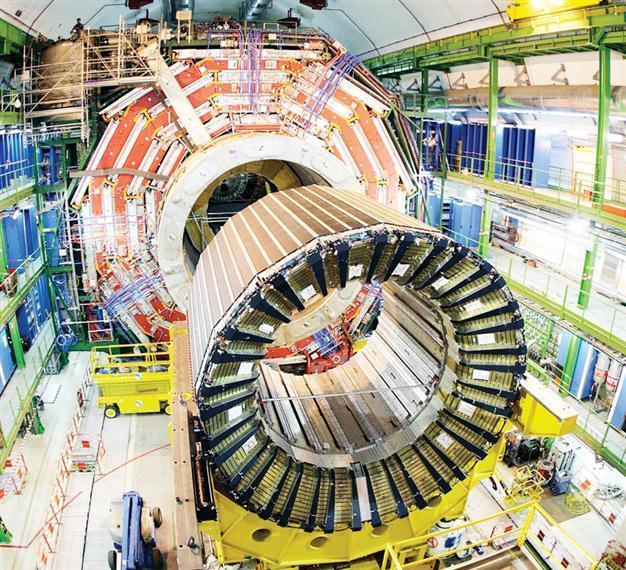Scientists slim hunt for the ‘God’ particle
GENEVO - The Associated Press

Experiments at the giant atom smasher narrows the search for the Higgs boson. AP photo
Scientists hunting for an elusive sub-atomic particle say they have found “intriguing hints” that it exists, narrowing down the search for what is popularly known as the “God” particle. The Higgs boson, which is believed to be a basic building block of the universe, is likely to be found in the lower mass or energy ranges of the massive atom smasher being used to track it down, physicists from two independent research teams said yesterday.The researchers were careful to note that they did not have enough data yet to definitively say the particle exists, but added that the latest data was strong enough that the question could be answered one way or another by next year.
Researchers hope that the particle, if it exists, can help explain many mysteries of the universe. British physicist Peter Higgs and others theorized the particle’s existence more than 40 years ago to explain why atoms, and everything else in the universe, have weight.
Both of the research teams are involved with CERN, the European Organization for Nuclear Research near Geneva. CERN oversees the $10-billion Large Hadron Collider under the Swiss-French border, a 27-kilometer tunnel where high energy beams of protons are sent crashing into each other at incredible speeds.
Fabiola Gianotti, an Italian physicist who heads the team running the so-called ATLAS experiment, said “the hottest region” was in the lower-energy ranges of the collider. She said there were indications of the Higgs’ existence and that with enough data, it could be unambiguously discovered or ruled out next year. Several mass or energy ranges within the atom smasher have now been excluded to a “95 percent confidence level,” Gianotti told other physicists at CERN. Afterward, Guido Tonelli, lead physicist for the team running what is called the CMS experiment, outlined findings similar to those of the ATLAS team, saying the particle was most likely found “in the low mass region” of the collider. “The window for the Higgs mass gets smaller and smaller,” said said Rolf Heuer, director of the European particle physics laboratory near Geneva. “But be careful.” he said. “We have not found it yet, we have not excluded it yet.”
















